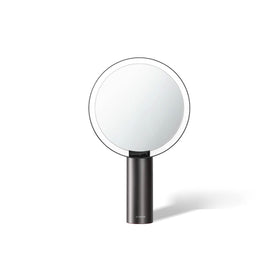Cicatrices de acné deprimidos: ¡DIGA ADICIÓN DE ELLOS CON ESTOS ENTRADOS!
Navegación
- ¿Qué son las cicatrices deprimidas del acné?
- Tipos de cicatrices de acné deprimidas
- Opciones de tratamiento para las cicatrices de acné deprimidas
- Conclusión
¡Bienvenidos nuevamente, queridos amigos de Armiro!
Cicatrices de acné deprimidas son un recordatorio deprimente de sus brotes de acné pasados, que dejó cicatrices profundas en nosotros física y mentalmente. A medida que envejecemos, cicatrices de acné A menudo se vuelven más notorios en nuestra piel. pierde colágeno¿No quieres que te molesten las cicatrices deprimidas del acné?
Únase a nosotros en este artículo del blog para descubrirlo. ¿Qué hay detrás de las cicatrices del acné y qué podemos hacer para cuidar las cicatrices del acné deprimidas?.

¿Qué son las cicatrices deprimidas del acné?
Los brotes de acné dañan profundamente nuestra piel, dañando tanto la piel como los tejidos cutáneos. A medida que el acné disminuye, nuestro cuerpo trabaja para reparar el daño, lo que provoca la producción de colágeno, una sustancia que refuerza la epidermis.
En este proceso, puede aparecer una cicatriz de acné, dependiendo de la producción de colágeno en nuestro cuerpo. Las cicatrices de acné hundidas se forman si se produce muy poco colágeno, mientras que las cicatrices de acné elevadas surgen por un exceso de colágeno.
Tipos de cicatrices de acné deprimidas
Hay tres cicatrices de acné deprimidas: en forma de picahielo, en forma de vagón de carga y en forma de rodadura, cada una de las cuales tiene sus propias características:
- cicatrices de picahielosSon cicatrices profundas y estrechas que penetran la dermis. Se asemejan a marcas de punción en la piel. Las cicatrices en picahielo son el tipo más profundo de cicatriz deprimida y las más difíciles de tratar. Se forman cuando quistes infectados crean túneles en la piel.
- Cicatrices de vagón de cargaLas cicatrices en vagón de tren son depresiones anchas con bordes bien definidos. Suelen encontrarse en las mejillas y las sienes. Son más anchas que las cicatrices en picahielo, pero menos profundas. Se forman por la inflamación y el daño del colágeno en la dermis. Las opciones de tratamiento incluyen rellenos dérmicos, microagujas y terapia láser.
- Cicatrices onduladasLas cicatrices onduladas causan una apariencia irregular y ondulada en la piel. Se forman cuando bandas de tejido se adhieren a la superficie inferior de la dermis, tirando de la piel hacia depresiones. Las cicatrices onduladas pueden mejorarse con tratamientos con láser ablativo, dermoabrasión y rellenos dérmicos.
- Cicatrices atróficas o de viruelaEstas cicatrices se asemejan a hoyos superficiales y hundidos en la piel. Tienen bordes inclinados y una base ancha. Las cicatrices atróficas se deben a la pérdida de tejido debido a una inflamación grave. A menudo pueden mejorarse con rellenos dérmicos, aumento de tejido, terapia láser, dermoabrasión y transferencia de grasa.
- Cicatrices hipertróficas o queloidesLas cicatrices hipertróficas son cicatrices elevadas que se forman debido a la producción excesiva de colágeno durante el proceso de cicatrización. Crecen más allá de los límites de la lesión original del acné. Las cicatrices queloides son un tipo más grave de cicatrización hipertrófica que puede crecer agresivamente y extenderse al tejido circundante. Requieren tratamiento con esteroides, láminas de silicona, terapia láser, crioterapia y cirugía para reducir su apariencia.
- Cicatrices macularesLas cicatrices maculares causan una zona plana y decolorada de la piel donde antes había una lesión de acné. Se forman cuando el cuerpo produce demasiado o muy poco pigmento durante el proceso de curación. Las cicatrices maculares a menudo pueden disimularse con maquillaje o mejorarse con cremas tópicas aclaradoras o atenuadoras que contienen ingredientes como hidroquinona, ácido kójico y ácido azelaico. La terapia láser también puede ayudar a reducir la decoloración.
Opciones de tratamiento para las cicatrices de acné deprimidas
Dado que las cicatrices de acné deprimidas nacen del acné, asegúrese de abordar primero el acné antes de tratar las cicatrices del acné de las siguientes maneras:
#1 Peelings químicos
Peelings químicos Use una solución para eliminar la capa superficial de la piel, revelando una piel subyacente más suave y sana. Las exfoliaciones químicas son eficaces para tratar las cicatrices en picahielo y en vagón de tren.
#2 Rellenos dérmicos
Rellenos dérmicos Son inyecciones que aportan volumen a la piel, reduciendo la apariencia de las cicatrices deprimidas. Este tratamiento es más eficaz para las cicatrices en vagón de tren.
#3 Microagujas
Microagujas Utiliza un dispositivo con pequeñas agujas que perforan la piel, estimulando el proceso natural de curación del cuerpo y estimulando la producción de colágeno. Este tratamiento puede mejorar la apariencia de todo tipo de cicatrices de acné deprimidas.
#4 Rejuvenecimiento con láser
Rejuvenecimiento con láser Utiliza un láser para eliminar la capa superficial de la piel, lo que promueve la producción de colágeno y mejora su textura. Este tratamiento es eficaz para todo tipo de cicatrices de acné deprimidas.
#5 Subcisión
Subcisión Es un procedimiento quirúrgico que consiste en romper el tejido fibroso subcutáneo para liberar la cicatriz hundida. Este tratamiento es más eficaz para las cicatrices onduladas.

Terapia de luz LED n.º 6
Qué es Terapia de luz LEDLa terapia LED utiliza diferentes longitudes de onda de luz para tratar diversos problemas de la piel, como el acné y las cicatrices. Es una técnica no invasiva e indolora muy popular en la industria del cuidado de la piel.
¿No quieres gastar una fortuna en el salón de belleza?
¡AMIRO tiene una terapia LED para tu hogar! Máscara de terapia de luz LED AMIRO, con 4 modos de luz: luz azul, luz amarilla, luz roja y luz infrarroja, es capaz de tratar las cicatrices del acné, reducir la inflamación de la piel y estimular la regeneración del colágeno de la piel.
Su tamaño compacto lo convierte en una herramienta perfecta para uso doméstico y de oficina.

Conclusión
Al leer la última sección, se habrá familiarizado con información detallada sobre las cicatrices de acné hundidas, que son la dolorosa marca del acné. Con el tratamiento adecuado y nuestras recomendaciones... Máscara facial de terapia de luz LED AMIRO L1, ¡Puedes reducir y aclarar las marcas de irrigación y lucir una piel limpia, tersa y suave!
Leer más
- Envejecimiento de la piel alrededor de los ojos: signos y tratamientos
- Cómo deshacerse de los ojos hinchados: consejos &¡Trucos para despertarte con un aspecto renovado!
- Cómo mejorar la apariencia de tu maquillaje con un espejo LED
- Reafirma tu piel: La guía definitiva para tratar la flacidez de la piel
- ¡El mejor dispositivo de depilación de 2023! Guía completa para ti





